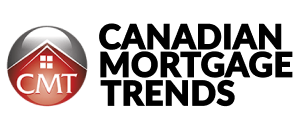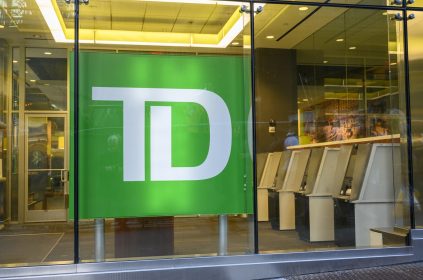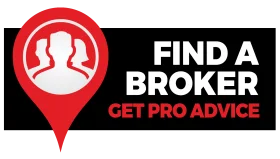By Ross Taylor & Scott Peckford
As the retiree population grows and home equity reaches historic highs, lenders like Bloom Financial, HomeEquity Bank, and Equitable Bank are filling a growing need for flexible, accessible retirement funding.
For mortgage brokers, understanding and effectively marketing reverse mortgages is essential to serving this expanding demographic.
Think of reverse mortgages like that trusty sand wedge in golf; most of the time it stays in the bag, but when you’re stuck in a tough spot it may be the only club that can save the shot. You won’t use it every day, but you’ll be glad it’s there when you need it.
Why reverse mortgages are gaining momentum
Canada’s aging population, paired with decades of rising home values, has created a new kind of financial reality: many older homeowners are house-rich but cash-poor. With limited liquid savings, rising healthcare and living costs, and a desire to age in place, older Canadians need smarter options.
Reverse mortgages allow homeowners aged 55+ to access tax-free equity in their homes without selling or making monthly payments. The loan is repaid only when the home is sold, the homeowner moves out, or passes away.
Common use cases:
- Retirees with mortgages or debt who want to eliminate monthly payments
- Seniors needing to cover increasing healthcare or living costs
- Parents looking to provide a “living inheritance” (e.g., down payments for adult children)
- Grey divorcees who want to buy out a spouse or remain in the family home
- Homeowners needing to fund renovations or home accessibility upgrades
How reverse mortgages work: Key features and product innovations
Core product features
- Eligibility: Homeowners must be 55+; the property must be their principal residence.
- Loan amounts: Up to 55% of the home’s value (up to 59% with Equitable Bank).
- No monthly payments: Interest accrues and is repaid from the sale of the home.
- Flexible access: Borrowers can choose lump sums, scheduled monthly advances, or draw funds on demand using Bloom’s prepaid Mastercard.
- No negative equity guarantee: Clients will never owe more than the fair market value of their home.
- No income or credit requirements: Approval is based on age, home value, and location, not income or credit score.
Product innovations
- Bloom’s prepaid Mastercard: Lets clients draw funds only when needed, minimizing interest costs and giving them control.
- Flexible disbursement: Both HomeEquity Bank and Equitable Bank offer staged advances to help with budgeting and longevity planning.
Why reverse mortgages align with seniors’ financial habits
One of the often-overlooked reasons reverse mortgages work so well is that older Canadians are disciplined budgeters.
Most live on fixed incomes, avoid unnecessary debt, and prioritize financial stability. They’re not chasing large lump sums, they want reliable, manageable access to funds.
Today’s reverse mortgage products reflect those values. Scheduled advances or on-demand cards allow clients to access only what they need, when they need it. Interest accrues only on what’s used. It’s not new debt, it’s leveraged equity, used intentionally and conservatively.
As brokers, when we approach these conversations with empathy and creativity, we often discover that a reverse mortgage is the best-fit solution hiding in plain sight.
Addressing common concerns and misconceptions
Despite their benefits, reverse mortgages remain misunderstood. Effective marketing requires brokers to educate and address concerns head-on.
1. Equity depletion
Many clients fear that a reverse mortgage will erode all their home equity. But with even modest home price appreciation (4–6% annually), most borrowers retain significant equity over time.
Example: A client with a $750,000 home and a $250,000 reverse mortgage would still retain over $500,000 in equity after 15 years at a 4% appreciation rate. At 6%, that equity level remains above $500,000 for over 35 years.
Use financial illustrations and equity projection charts to help clients and their families visualize long-term outcomes.
2. Impact on heirs
The no-negative equity guarantee ensures that clients’ estates won’t owe more than the home’s market value. Heirs can inherit any remaining equity and may choose to refinance or sell the property.
3. Loss of control
Modern reverse mortgages give borrowers full flexibility. Clients stay in their homes, decide how much equity to access, and draw only what they need, on their terms.
Where to find reverse mortgage clients
Many of the best opportunities are already within reach. Here’s where to look:
1. Your existing client database
Start by filtering for clients aged 55+, especially those with upcoming renewals or carrying high loan-to-value ratios. Many are ideal candidates for cash flow relief or debt elimination.
2. High-cost senior service providers
Home care costs can exceed $20,000/month, well beyond what most retirees can cover from savings. Home equity is often their only untapped asset.
Establish referral relationships with home care providers, in-home health companies, and private caregivers. A simple message like….
“If your client is struggling to afford care, I may have a solution that doesn’t involve selling their home.”
….can lead to consistent, high-quality referrals.
3. Divorce and family lawyers
Grey divorce is on the rise, and these clients often struggle to afford a buyout or qualify for a conventional mortgage. Reverse mortgages offer a dignified way to settle assets and keep one party in the home. Partner with lawyers and mediators to add this tool to their settlement strategy.
4. Financial planners and investment advisors
Reverse mortgages can extend the life of retirement portfolios by slowing the drawdown of managed assets. Instead of liquidating investments, clients can draw $1,000 to $2,000/month from their home equity, buying planners more time to manage returns and reallocate funds.
Educate planners on how reverse mortgages can complement, not compete with, traditional retirement planning.
5. Realtors
In downsizing scenarios, many clients want to preserve cash instead of tying up all proceeds in their next home. A reverse mortgage can finance the new purchase while keeping some liquidity available.
6. Direct outreach
Educational webinars, email campaigns, and local seminars targeting homeowners 55+ can attract leads. Focus your messaging on real-world concerns: cash flow, healthcare, legacy, and independence.
Tools and tactics for effective reverse mortgage marketing
1. Lead with education
Develop brochures, videos, and digital resources that clearly explain how reverse mortgages work. Use plain language, visual examples, and real-life success stories.
2. Tailor your messaging
Avoid labels like “senior” or “elderly.” Instead, focus on empowerment, independence, and control. Language matters; meet your audience with dignity and clarity.
3. Tell real stories
Share testimonials and case studies from clients who used reverse mortgages to eliminate debt, support children, or afford long-term care. These examples build trust and relatability.
4. Highlight product differentiation
Each lender brings something unique to the table:
- Bloom: On-demand prepaid Mastercard, ideal for controlled monthly access
- Equitable Bank: Higher LTV options
- HomeEquity Bank: National brand awareness and strong track record
Understanding and showcasing these differences will help you match the right solution to the right client.
5. Partner with purpose
Train your referral partners, especially financial planners, realtors, lawyers, and care providers, on how reverse mortgages solve real problems. When they understand the product, they become your best advocates.
6. Use digital and direct marketing wisely
Target high-equity neighbourhoods with direct mail. Use Facebook and Google Ads focused on the 55+ demographic. Compelling headlines like….
“Eliminate Your Monthly Mortgage Payment”
“Turn Your Home Equity into Tax-Free Retirement Cash”
….perform well and drive curiosity.
7. Equip families with the facts
Adult children are often involved in these decisions. Provide comprehensive, easy-to-understand information packs that allow clients to educate their family members confidently.
Conclusion: A tool for modern retirement
Reverse mortgages aren’t a one-size-fits-all solution, but for many Canadians, they’re exactly the right tool at the right time.
The market is growing rapidly, driven by demographics, economic realities, and more innovative product design.
As brokers, the opportunity lies not just in understanding reverse mortgages, but in knowing how to present them, demystify them, and offer them at the right moment. By leading with education, empathy, and strategy, we can help our clients retire with confidence, without sacrificing their home or financial freedom.
Sometimes, the key to a secure retirement is sitting right under their roof.
For more resources, marketing materials, and broker tools, visit Bloom Financial, HomeEquity Bank, and Equitable Bank.
bloom financial Editor's pick equitable bank HomeEquity Bank retirement reverse mortgage reverse mortgages ross taylor Scott Peckford seniors
Last modified: May 27, 2025










